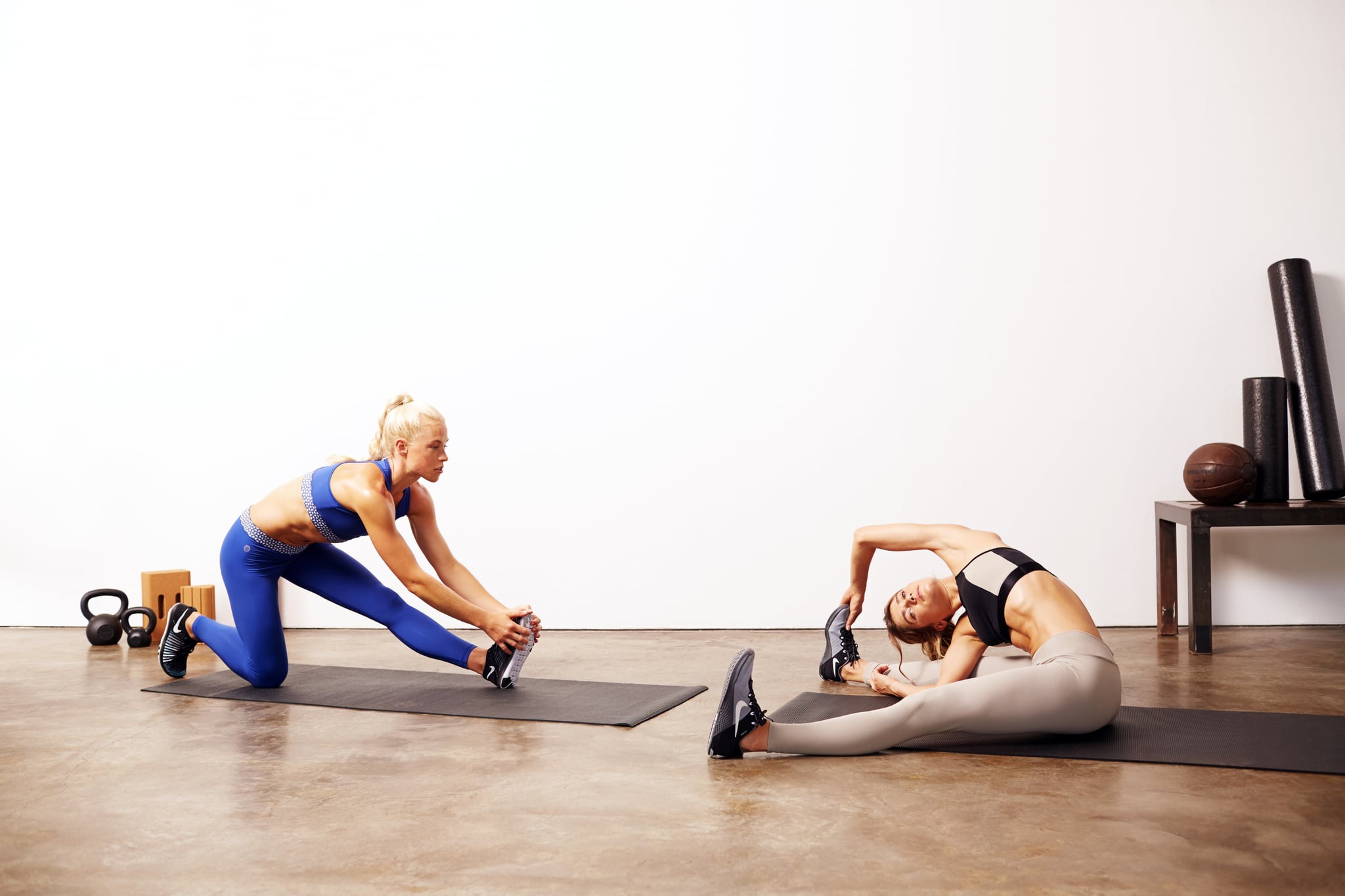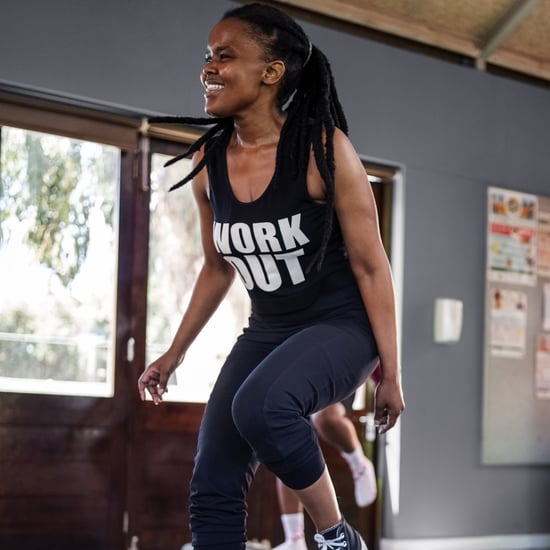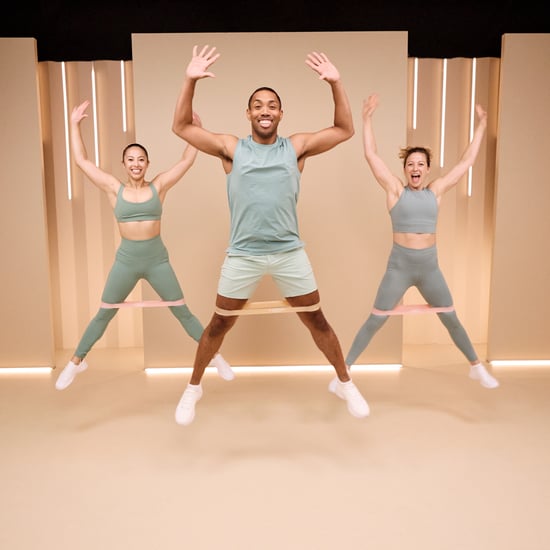Is Doing Splits Good For You?
Want to Do the Splits? Why This Trainer Says "Please Don't"

One of the most popular fitness New Year's resolutions each year is to finally "do the splits." Year after year, more and more people want to reach that holy grail of flexibility that yogis and ballerinas show off with grace, yet so many of us are stuck in a formation that looks like a 90-degree-angle triangle.
But does it serve a purpose? It's true that flexibility — to an extent — can improve your fitness practice. And when you're a dancer, sometimes it's necessary. It also makes yoga a little easier! But everything has its limits. From a practical standpoint, trainer and injury prevention specialist Liz Letchford, MS, ATC, says you should pick a new resolution. We chatted with the expert herself to get the 411 on splits.
Is there any physical benefit to being *that* flexible?
"You'll be really impressive at parties . . . ?" Liz joked that, aside from the "ooh" and "ah" reactions you'll get (and possibly a confidence boost!), you won't see physical benefits. "From a biomechanical standpoint, [there is no benefit]. Your body actually craves stability in order to function correctly and without injury."
Are there downsides to being that flexible?
"Flexibility within normal joint ranges of motion is very important," Liz told POPSUGAR. "But flexibility beyond normal range of motion leaves you at risk for hypermobility-related injuries like labral tears, dislocations, and ligamentous sprains."
With the splits specifically, she's seen some horror stories when it comes to superflexible athletes and clients getting injured. "I work with many people who have stretched their hip joint into submission," she said. "They intended to stretch their tight hip flexor muscles, but instead destroyed their hip capsule — the strong 'suction cup' holding their hip into the socket." YIKES! "Now they struggle to find stability when performing even the most basic of movements, leaving them very susceptible to injury."
How flexible should you aim to be?
So we know that there's a limit with flexibility, but we still do want to stretch! "Aim to be flexible enough to perform the movements required of your particular training routine with strength and control," said Liz. "Understand that if your sport or activity relies heavily on excessive flexibility [think gymnastics, dance, yoga] that you are putting yourself at risk for injury. I know too many dancers and yogis who have terrible hip and back issues from years of asking too much of their hip joints."
She identified one area that many people overstretch: the hamstrings. "Everyone aims to pull their hamstring well past normal range of motion," she said. Use this helpful guide she put together. "Here's how to test your hamstring range of motion: laying on the floor, bring one leg straight up to the sky. Your leg should make a 90-degree angle with the floor. This is normal hamstring range of motion. Anything much past this is considered hypermobile." You're probably more flexible than you thought, huh?
What should your new goal be?
If we can't use the splits as our New Year's resolution, what should we be working toward? Liz has a (very practical) idea.
"Aim to increase mobility instead of flexibility. Mobility describes how well the body is able to move as a whole system, rather than just at one joint. Those who have excellent mobility might not be able to put their feet behind their head, but they can squat, deadlift, jump, reach, and twist without injuring themselves."






